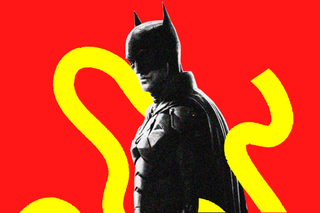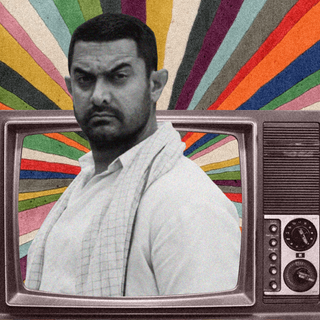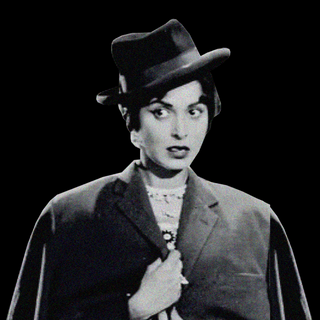
What Are The Batman’s Politics?
Understanding the politics of the newest reboot may help place its relevance in the“post covid” cinema landscape.

An anti-hero with a moral dilemma? Check. Chiaroscuro lighting and cinematography? Check. A dark grimy cityscape teeming with an underbelly of violence and corruption? Check. A morally ambiguous femme fatale? Also check, sort of.
Matt Reeves’ The Batman (2022) has the elements of film noir, making it both a loving homage to the superhero and the detective noir genres simultaneously. Robert Pattinson’s turn as the titular, iconic superhero is broody and turns inward arguably more than most recent versions of the character. Delivering iconic (and sort of cheesy) lines such as “I am the shadows” against Nirvana’s Something In the Way makes the dark self-seriousness come to life in a film where a man wears a cape and cowl and ponders the big questions. But something else is in the way, and that’s a riddle that the Batverse hasn’t quite solved yet. What are the politics driving Bruce Wayne as Batman? What is the moral universe he inhabits?
For one, The Batman straddles both the film noir and the neo-noir genres, turning up a muddled answer to this question. Film noir represented American post-war disillusionment and discontent in the form of darkness, confusion and violence; neo-noir took the stylistic elements of film noir to an updated context: in the 70s, it deeply pushed the boundaries of morality and asked questions that film noir didn’t get to due to a restrictive Hays Code censorship regime. And while film noir consisted of psychological thrillers and morally grey characters, neo-noir did so with a socio-political context (read: Watergate, the wildly unpopular Vietnam War, a looming techno-dystopia). The Batman walking the line between Gotham as an existential hellscape and as a technopolis from nightmares makes it an interesting revival of the noir genre itself, prompting questions about its ideology that its predecessors couldn’t answer.
The “darkest” Batman movie to come out for the third time is caught in a dilemma — against its own self. What is the status quo it is grappling with — and should it be upheld or upended?
On the one hand, we see our beloved caped crusader spend more time as Batman than as Bruce Wayne; his entry accompanied with “I’m vengeance,” sets the tone for the superhero’s morality. Here is an individual, driven by the individualistic impulse to knock down random criminals on the streets as revenge for individual acts of injustice. Vengeance is by itself an individualistic impulse: it is a very personal form of psychological tumult, conditional upon unique circumstances, and drives actions that are unique to different people.
Along the way though, this younger version of The Bat starts to come of age: he is confronted with a city whose problems run much deeper than individual acts of violence. He starts to see a pattern in what previously were, to him, random acts of nihilism. Systems of power — both formal and informal — are in cahoots with one another, and those who are supposed to act in public interest almost always act in private self-interest. This drives Gotham to poverty, inequality, and a frenzied public disillusionment with the status quo.
Enter Batman and trusty good cop archetype Jim Gordon — previously seen as a crime-fighting duo, we see them in The Batman as a detective duo that attempts to decode The Riddler’s motives as he leaves a string of grisly murders in his wake. They look at the individual clues he leaves behind at each crime scene and confront the question: is this a senseless act of individual violence, or is it an act of political terrorism? In other words: individual, or systemic? As the two trudge on, always just a step behind Riddler’s maniacal schemes, the extent of systemic corruption dawns on them for the first time. It gets even more personal for Bruce, when he discovers for the first time that his billionaire philanthropist father, Thomas Wayne, may not have been as incorruptible as he once thought. With his moral cocoon thus shattered, Bruce wonders what the right thing to do is. How do you confront a dirty system all alone?
Related on The Swaddle:
DC Unveils Bisexual Superman. How Meaningful Is the Gesture?
The Riddler’s answer to this is the use of violence to “unmask the truth.” He assimilates a group of followers online, radicalized by his manifesto of social change through taking down the system that marginalized the likes of them. They take back what agency they can, and use it against the system that left them very little agency in the first place. In their views, the “bad guys” are the government and the mob bosses that work together.
But while such a conceptualization may have worked earlier, today’s conversations probe into these questions a little differently. We no longer have mafiosi who would arrive at your doorstep to break your knees for information and profit. We have billionaires. They acquire their wealth nefariously, but not in ways that would leave a trail of question marks and blood behind. Free marketeers and venture capitalists are the ones who work with the government now; their intimate behind-the-scenes ties ensure that governments are increasingly on the payroll of billionaires. The problem, now, is that Bruce Wayne is a billionaire.
The moral dilemma at the heart of The Batman, then, is a little outdated. But it shows signs of self-awareness, nevertheless. Batman’s vision is clouded by his upbringing in the lap of luxury, and his ability to become a vigilante who, through his cooperation with the police, can legitimately use violence. This privilege is called out by Zoe Kravitz’s Selina Kyle, or Catwoman, as she shows Batman the agency-system dichotomy. How much agency can you have when your circumstances are dictated by the system? Selina, unlike Bruce, is downtrodden by the system; Bruce, on the other hand, represents the system. Although they both live outside of it, their motivations are different. Batman idealistically assumes that our circumstances are the choices we make — and he makes this point rather tastelessly about the death of Selena’s girlfriend. Selena fires back that choices aren’t as self-evident as that, and that sometimes people need to do what they can to get by in a broken system that victimizes rather than protects marginalized individuals like her.
Towards the end, Selina even suggests driving off into the sunset together with Batman to take down some “CEO hedge fund” types. He refuses, ostensibly to stay behind in Gotham, but perhaps also because he is a hedge fund type. Or he will be. But unlike previous iterations of Batman’s story that villainize those who question the supremacy of the rich — think the parallels between Bane in The Dark Knight Rises, and the Occupy Wall Street movement — this one actually sits down to think.
The Riddler needn’t have spray painted a giant question mark on Thomas Wayne’s legacy, but he might as well have done so by questioning his model of charity and philanthropy. And although he is the villain in this story, the film goes on to thin the line between him and Batman when in the end, one of Riddler’s followers identifies himself as “vengeance.” What’s more: it comes at a moment when Batman is very close to breaking his own “no kill” rule.
This prompts a shift in gears. Batman realizes the problem with his model of crime-fighting, and he begins to piece together — with Riddler’s help — the larger systemic picture. And so when he lights a flare and leads Gotham’s citizens out of the floodwaters, it is a symbol not of hope, but of community. By placing himself at the heart of Gotham’s citizenry to help them first-hand, rather than indirectly by punching a few bad guys, Batman may have realized for the first time what it would truly take to clean up what Riddler calls the “cesspool of a city” without resorting to means that are just a hair’s breadth away from Riddler’s own. He also seems to be afraid, for the first time, of what “unmasking the truth” really means. He thinks that Riddler has figured out his identity — but it gives him pause because of how Bruce Wayne, the Billionaire B(r)at, is part of the very truth that Riddler tries to rope in Batman as an accomplice to unmasking.
The only problem is that it doesn’t go far enough. The cops are still the good guys at the end, Batman still has legitimate use of violence that distinguishes him from Riddler and his ilk through his cooperation with the system rather than rejection, and he’s still a billionaire who will use his wealth to fly around and make more gizmos for himself.
The question, in what critics are tentatively calling a “post-Covid cinema” landscape, is how long status quo-affirming films will stay relevant. While The Batman does shift the needle a little, it sits at an important moment in time. People are fed up with the system that left millions to die as disease ravaged them, and billionaires scooped up profits on a scale unmatched in all of our history. Increasingly, our sympathies lie with the villain’s motivations — if not the means — rather than the superhero’s. What would it take to save us from this kind of a rot — one that isn’t as visible but is more pernicious? While The Batman knows the answer, it is still on a subconscious level. Meanwhile, we get to enjoy stunning cinematography and a dramatic score as we watch the Bat ponder these questions — a little too slowly for the zeitgeist’s requirements. But at least now, he is less of an übermensch and more of an emo goth trying to process tectonic shifts not only in his own worldview, but in society too.
Rohitha Naraharisetty is a Senior Associate Editor at The Swaddle. She writes about the intersection of gender, caste, social movements, and pop culture. She can be found on Instagram at @rohitha_97 or on Twitter at @romimacaronii.
Related


Can We Move On: From the Trope of the Male Savior Who Rescues Women From Patriarchy in ‘Woke’ Movies
